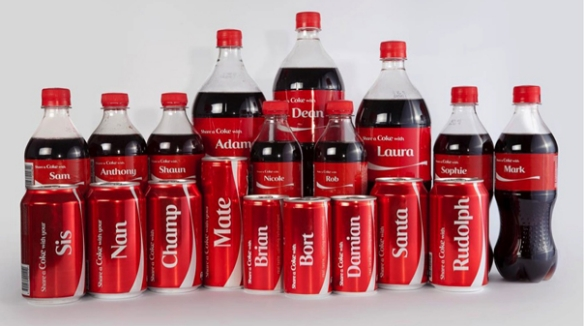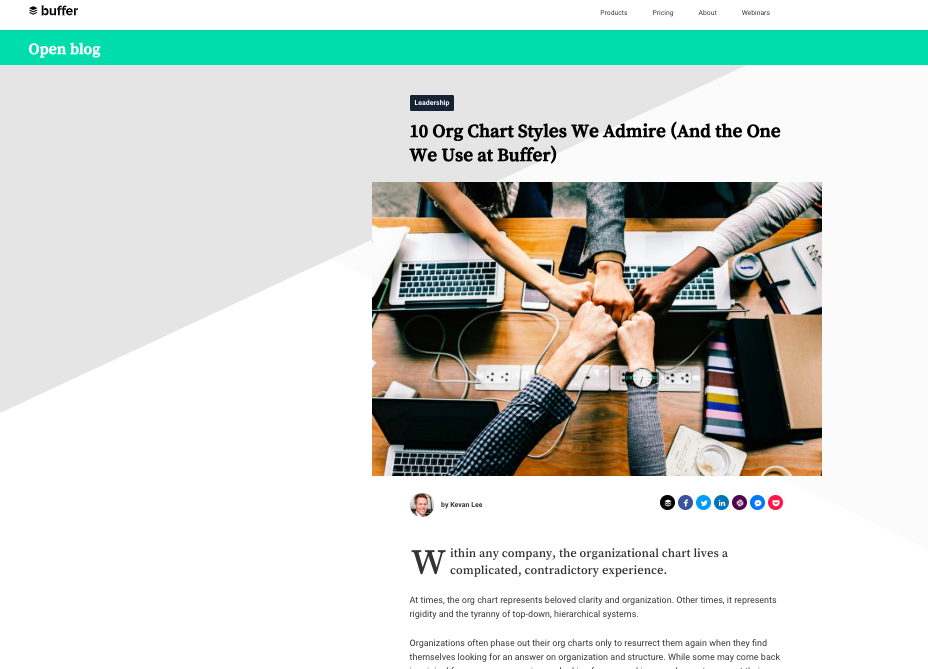Years before they coined the term ‘content marketing’, companies have been practicing content marketing in some shape or form whether it was through magazines, articles, newsletters, or some form of print. Over a century ago, John Deere, owner of an agriculture and construction machinery company launched The Furrow, a legendary magazine that brought together two disparate communities: agriculture and brand publishing. For farmers, this magazine was the agrarian version of the widely acclaimed Rolling Stones magazine. It was more than an agricultural journal. It was THE magazine that told farmers how to run their business. The magazine saw instant success and reached over 570,000 consumers in the U.S. and Canada during the 19th century. That was a pretty big deal back then and even today, it continues to be a favorite among Deere’s fans.
Today, many attribute Deere’s iconic magazine as the ‘unofficial birth’ of brand publishing, which played a key role in the evolution of content marketing. Businesses today know the role content marketing plays in defining the success of a company’s brand. Organizations that have used this technique effectively have found many benefits: greater visibility, a boost in customer trust, and higher sales. A 2019 study by CMI suggests 88 percent of B2B marketers and 81 percent of B2C marketers believe that producing content is necessary to build trust and credibility with their audiences which is why brands have turned to content marketing.
Why content marketing?
There are many reasons why businesses incorporate content marketing into their business strategy. For starters, content enables brands acquire, engage, convert, and delight customers. While many marketing tactics can help them achieve these goals, what sets content marketing apart from others is the ability to sustain and reach their target audience. According to CMI, many companies who use content marketing have even generated three times more leads when compared to paid search. However, studies show that not all brands succeed in their content marketing efforts. Content marketing requires a user-centric approach, and brands that have understood this concept have seen success. Let’s take a look at five companies who get content marketing right.
Five Real-world Content Marketing Examples
1. Growth Hypothesis by LeadPages

Source: Leadpages
LeadPages offers customizable and mobile-friendly landing page templates. Clay Collins, the founder, and CEO of LeadPages realized that their competitors had very high acquisition costs (anywhere between $5k – $10k). Collins developed a growth hypothesis that would help LeadPages scale their conversion path at a lower cost.
Collins believed that the right content team could accomplish what an 80+ member sales team could for other companies. Instead of hiring for a sales position, Collins hired a YouTube channel owner tasked with creating videos to describe their product and develop use cases that could be leveraged across digital channels. When Collins measured the effectiveness of this content role versus that of a salesperson at a company like Salesforce, he found that the YouTube owner outperformed the salesperson by a considerable margin. Encouraged by this result, he hired the channel owner who would also assume the role of a blog writer.
Eventually, LeadPages built a content marketing team that produced a sequence of assets, including a blog, podcast, weekly webinars, and other marketing resources. “As a result of the growth hypothesis, we arrived at a CAC that was between 1 in 5% of the CAC of publicly traded SAAS companies,” says Collins in a Podcast Interview.
Results: LeadPages acquired over 35,000 new customers in less than three years, touching $16 million in revenue in 2015. They also became the #148 fastest growing company in the U.S. the next year.
2. #InItTogether by LinkedIn
LinkedIn is the world’s leading professional networking platform, with over 610 million users spread across 200 countries. This platform enables professionals and companies to connect for jobs, career advice, and tips. LinkedIn wanted to boost their active community by showcasing what success meant to different people chasing their professional charters.
They created a series of inspirational videos that documented the lives of professionals who use LinkedIn. The videos brought out their achievements and struggles, motivations, and also emphasized how LinkedIn has helped these professionals achieve their goals.
LinkedIn launched an integrated campaign across digital channels that included display ads, social media, online ads, search engine marketing, and also traditional offline channels such as radio, podcasts, outdoor/out-of-home videos, and more. However, the significant impact came when LinkedIn leveraged live television broadcasts to promote their campaign. They first experimented with the Academy Awards in 2016 across Atlanta, Los Angeles, Philadelphia, and San Francisco. After the tremendous success, LinkedIn continued to use major awards and events as a launchpad for its campaigns. They released the second phase of #InItTogether in Europe, the Middle East, Africa, and the Asia-Pacific region – each time the brand chose a big-ticket event in that region.. As an extension, LinkedIn released a 12 part video series covering the ‘sheroes’ (women superheroes) across the world.
Results: #InItTogether is one of the best examples of user-generated content (UGC) and helps you understand how UGC can help brands build engaging and impactful content. LinkedIn has seen a 37 percent lift in its brand favorability index in Germany and a 35 percent ad recall rate in the U.K.
3. The Game of Thrones Themed Video by Hootsuite
Hootsuite, a social media scheduling and automation platform, tapped into popular culture to connect with their audience. They created a thematic video based on one of the most popular shows – Game of Thrones. The video called “A Game of Social Thrones” blended the social media landscape with the overarching theme of the show. This video was launched at the beginning of Season 4 and is a good example of how social media life resembles the plot of the show. It also served as a subtle reminder that Hootsuite can help companies win in the social ‘game of thrones’.
Results: Users who were familiar with Game of Thrones found an instant connect, and those who didn’t watch the show viewed the video to understand its meaning from a social media perspective. This helped Hootsuite draw a larger audience and execute a viral campaign!
4. Share a Coke
Coca-Cola’s business research in Australia showed that many consumers found the brand to be too large and not talking to them at eye level. Coca-Cola realized the need to transform its image and connect with consumers in a way that endeared them to the brand. That’s when they launched “Share a Coke.”

Source: Share a Coke: How the Groundbreaking Campaign Got Its Start ‘Down Under’
The company introduced Coke bottles bearing the most common first names in the region. They encouraged consumers to share a bottle with someone who’s name matched with the one on the bottle. To make this more personal, they printed these first names using a new font they called “You”.
Coca-Cola also launched DIY traveling kiosks so customers could drop in and print customized names on bottles for themselves. They placed these kiosks across all major shopping malls in the country. Consumers queued up to use the booths, and these bottles also became a popular gift for many during the holidays.
Coca-Cola also launched a digital campaign that tied in with this offline strategy. Consumers were encouraged to share digital Coke bottles with personalized name on Facebook.
Results: Coke sold over 250 million bottles and cans – almost ten times the population of the country at the time. This campaign was a perfect example of blending the online and offline experiences for customers. Marketers can understand the role of personalization to connect with their audiences from this success story. Coca-Cola could win with this strategy in over 70 countries, including China, Great Britain, and the U.S.
5. The Open blog by Buffer
Buffer is a social media scheduling platform that helps marketers automate social media posts and measure the effectiveness. They had launched their official blog called, “Open blog” in an effort to gain followers, increase viewership and raise brand awareness. Buffer follows a 3-step process centered around the audience, cadence, and promotion. It also identifies topics that matter to their audience through content themed around keyword research, inspiration, news, past experience, and intuition. They also ensure a steady pipeline of content that is required to achieve their goals.
Often times, companies perceive content production to be the final phase of content marketing – not at Buffer. This company realizes that producing content is only one step in the marketing cycle. To ensure that their blogs reach their broad audience, Buffer lay down a content promotion strategy to ensure. Some of these steps include SEO, subscriber-based newsletters, attractive headlines, and more.
While the topics and themes covered on the “Open blog” is relevant to a marketer’s day-to-day work, but they also include tips on how Buffer implements that advice for their organization.

Source: Buffer’s Open blog
Results: The blog’s readership touches 1.5M visits every month which translates to boost in sign-ups and revenue for Buffer.
Conclusion and Takeaways
Now we’ve seen some of the most successful content marketing campaigns from some of the world’s leading brands, it’s time for you to get inspired by them. Here are the key takeaways:
- Have a documented content marketing strategy. One of the biggest mistakes marketers tend to make is not having a content strategy. Companies that do have one in place are more likely to be successful than brands that do not.
- Diversify your content. To cut through the clutter and connect with your users, focus on producing specific content themes and topics that address a particular challenge for your users.
- Explore current content themes. Watch and listen to trends and news very carefully and adopt the most current topics into their content.
- Customize your content. Personalization strikes a chord with your audience. Something as small as the first-name on a Coke bottle helped the brand drive engagement and sales. How can you weave in personalization to your campaigns? Identify ways to include user-generated content, 1:1 conversation, and more to your content strategy.
- Look beyond production. Producing engaging content is only half-work done. You should also look at innovative ways to ensure that your content reaches the right audience in a regular manner.
What’s the secret to your content marketing success? Are there any tips that you’d like to share? Leave your feedback in the Comments section below.



Comments are closed.